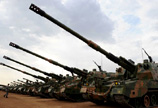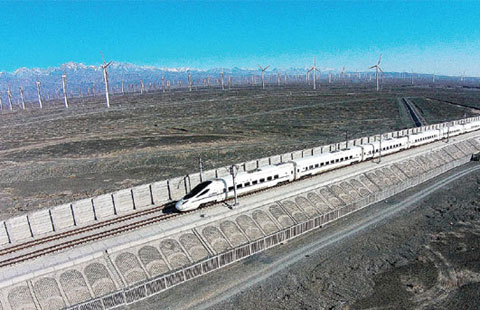Leasing construction machinery: a new trend
By ZHUAN TI (China Daily) Updated: 2014-11-17 16:38According to the country’s urbanization blueprint, China is expected to have an urban population of 840 million by 2020, which will enjoy a per capita living space of 35 square meters. It is expected to need 14.2 billion square meters of new housing by 2020 to meet the demand. “Real estate projects demand a large amount of machinery equipment, becoming a magnet for domestic and overseas machinery rental firms,” said the source.
Statistics from the association have showed that China now has 11,500 machinery leasing enterprises, but most businesses are small. Leasing firms, each having assets of more than 50 million yuan ($8.13 million), are less than 100.
But in Japan, medium-sized machinery rental companies account for 92 percent of the industry, while in the United States, the world’s most mature rental market, 10 percent of rental enterprises are large listed companies.
“Reinforced effort should be made to work out industry policies to stimulate the growth of China’s construction machinery leasing market,” said the source.
Use of foreign experience
The source said Chinese leasing companies should draw successful experience from foreign counterparts and use it to establish a new engineering machinery marketing system adaptable to the market economy.
“A lease strategy should be formulated to make leasing an important method of marketing,” the source said.
US Caterpillar Inc, the world’s leading engineering machinery manufacturer, has set up about 100 leasing outlets in North America and Europe to lease machinery equipment online.
“With a machinery leasing system, Chinese leasing firms are able to get higher profits by leasing secondhand equipment,” said the source.
Financial leasing business
“Financial lease is a practical method to expand the leasing business,” said the source, adding that efforts should be made to use foreign funds.
Chinese leasing firms should seek cooperation with powerful foreign investors, such as Tat Hong Group in Singapore, with domestic financial partners as Leading Capital and Fosun, and with domestic construction businesses as Yahgee, to set up joint ventures.
“The joint ventures are able to help the Chinese side know more about how to make use of the market and funds resources from foreign partners,” the source said.
By using financial leases, the source said, Chinese machinery manufacturers are able to launch technical projects to innovate their products and production facilities.
China has worked out policies to encourage enterprises and investment institutions to set up leasing companies, the source said, adding that engineering machinery manufacturers can run their factory-owned or controlled professional leasing companies.
Hami city in the Xinjiang Uygur autonomous region, for example, has launched a project to set up a large construction machinery equipment leasing market, that will consist of an equipment leasing area, a commercial area, an equipment maintenance area and a comprehensive service area.
“On completion, the market will help change the city’s disorder conditions resulting from scattered construction machinery equipment rental markets across the city,” said a manager from the Hami Ximeng Trade Co Ltd.
Its first phase is expected to cost 26.8 million yuan ($4.36 million) in investment. As of August, it had consumed 13.4 million yuan ($2.18 million).
Meanwhile, 440 small construction machinery leasing firms in Wuhan, Hubei province have joined hands to build a large leasing market which occupies an area of 53 hectares and is expected to cost 60 million yuan ($9.76 million), said Wu Weidong, secretary general of the Wuhan Construction Equipment Leasing Commerce Chamber.
“Wuhan can’t meet the growing demand for construction machinery equipment without such a big specialized leasing market,” Wu said.
- Hong Kong music producer detained for drug use
- Student who dropped out of Peking University has 'no regrets'
- Weapons winning battle for int'l market
- SOS villages provide orphans a good start
- Beijing stakes strong claim to host Winter Games snow events
- Disneyland gears up for Shanghai opening
- Disney reveals design of resort in Shanghai
- Bullet train starts operating in Xinjiang
- Young man makes living from ancient craft
- Smog creates demand for meteorological talent







